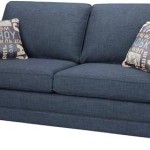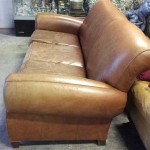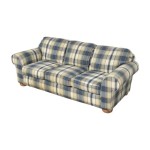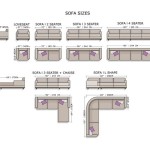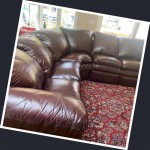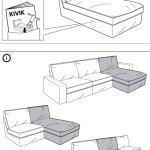Best Firm Sofa Cushions
Sofa cushions significantly impact comfort and aesthetics. Over time, cushions can lose their support, leading to a less enjoyable seating experience. Replacing worn-out cushions with firm alternatives can revitalize a sofa and provide improved posture and comfort. Selecting the right firm cushions requires careful consideration of various factors including fill material, density, size, and cover fabric.
Understanding Fill Materials
The fill material dictates a cushion's firmness, longevity, and overall feel. Several options are available, each with distinct characteristics.
High-Resiliency Foam: Known as HR foam, this material offers excellent support and durability. It recovers its shape quickly after compression, making it a popular choice for firm cushions. HR foam comes in various densities, allowing for customization of firmness levels.
Polyurethane Foam: A more economical choice, polyurethane foam provides adequate support, but it may not be as durable as HR foam. It is susceptible to softening over time, particularly with heavy use.
Down/Feather Blend: While typically associated with softer cushions, down/feather blends can achieve firmness when combined with a core of high-density foam. This option provides a balance of support and plush comfort.
Polyester Fiberfill: A synthetic fill, polyester fiberfill offers a softer, more pliable feel. While not inherently firm, it can be layered to achieve a desired level of support. However, it tends to compress over time, requiring more frequent fluffing.
Considering Cushion Density
Density refers to the weight of the foam per cubic foot. Higher density foam generally equates to greater firmness and durability. Cushion density is typically measured in pounds per cubic foot (PCF). For firm sofa cushions, a density of 2.0 PCF or higher is recommended. Densities above 2.5 PCF provide exceptional firmness and support, ideal for individuals requiring extra back support.
Measuring for the Correct Size
Accurate measurements are crucial for a proper fit. Measure the existing cushions carefully, noting the length, width, and thickness. If replacing cushions in a sectional sofa, ensure measurements are taken for each individual section. Standard cushion sizes are available, but custom sizes can be ordered for a precise fit.
Choosing a Suitable Cover Fabric
The cover fabric contributes to both the aesthetics and durability of the cushion. Consider factors such as durability, cleanability, and overall style.
Microfiber: A synthetic fabric, microfiber is known for its durability and resistance to stains and fading. It offers a soft, comfortable feel and is available in a wide range of colors and textures.
Performance Fabrics: These fabrics are engineered to resist stains, moisture, and wear. They are ideal for high-traffic areas and households with pets or children. Performance fabrics often feature a special coating that repels liquids and prevents stains from setting in.
Linen: A natural fiber, linen offers a luxurious look and feel. It is breathable and durable, but it can be more prone to wrinkling than synthetic fabrics. Linen is often treated with a stain-resistant finish to enhance its practicality.
Cotton: A versatile and affordable option, cotton is soft, breathable, and easy to care for. However, it may not be as durable as other fabrics and can be susceptible to fading.
Leather: A premium choice, leather offers a classic and sophisticated look. It is durable and easy to clean, but it can be more expensive than other options.
Maintenance and Care
Proper maintenance can extend the lifespan of sofa cushions. Regular fluffing helps to redistribute the fill material and prevent excessive compression. Rotating cushions periodically ensures even wear. Following the manufacturer's cleaning instructions for the specific cover fabric will maintain its appearance and prevent premature wear.
Budget Considerations
Firm sofa cushions are available at various price points. The cost is typically influenced by factors such as the fill material, density, size, and cover fabric. While higher-density foam and premium fabrics generally command a higher price, they often offer greater durability and longevity. Setting a budget before shopping can help narrow down the options and ensure a cost-effective purchase.
Assessing Individual Needs
Ultimately, the best firm sofa cushion is determined by individual needs and preferences. Factors such as body weight, posture, and desired level of support should be considered when selecting a cushion. Testing cushions in person, if possible, provides valuable insight into their comfort and firmness level.
By considering these factors, individuals can select firm sofa cushions that provide optimal comfort, support, and longevity. Investing in high-quality cushions can significantly enhance the overall seating experience and revitalize the appearance of a sofa.

How To Choose The Right Sofa Cushion
Your Guide To Choosing The Right Cushion Filling Dfs

Choose The Best Sofa Cushions Firm Foam Soft Down Or Springs We Break It

The Best Foam To Use For Sofa Cushions Good Better

How To Choose The Right Sofa Cushion

Choose The Best Sofa Cushions Firm Foam Soft Down Or Springs We Break It

Down Vs Foam Sofa Cushions Circle Furniture
Your Guide To Choosing The Right Cushion Filling Dfs

11 Best Couches And Sofas To Buy 2024 The Strategist

Sofa Guide For 2024 Reviews By Wirecutter

